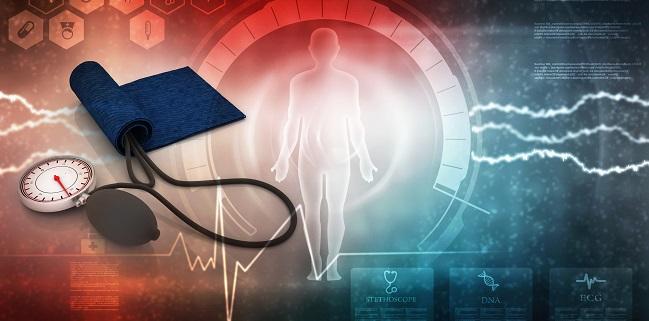Hypertension From Top to Bottom: Don’t Ignore Diastolic BP
Systolic BP has a stronger link to CV events, but diastolic hypertension also portends worse outcomes.

Systolic blood pressure is tightly linked to adverse cardiovascular outcomes, but that doesn’t mean diastolic measurements aren’t important.
That’s the message from a new study showing that among more than 1.3 million outpatients both systolic and diastolic BP are independently associated with the long-term risk of cardiovascular events (MI, ischemic stroke, or hemorrhage stroke), regardless of how hypertension is defined.
There has been some question about the relative influence of systolic and diastolic BP on risk of adverse outcomes, lead author Alexander Flint, MD, PhD (Kaiser Permanente Northern California, Oakland), explained to TCTMD.
“That’s where we’ve seen a pendulum swing over the years,” he said. “First, some time ago, it was thought that diastolic hypertension was really the only important thing in terms of the risk of stroke and heart attack, and over the many decades, the pendulum swung to the opposite direction where we by and large treat systolic as the primary driver of the risk of heart attack and stroke.”
This study, published in the July 18, 2019, issue of the New England Journal of Medicine, was done to help sort out the contributions of each BP reading, taking into consideration the lower threshold for defining hypertension in the latest US guidelines.
“The take-home message,” Flint said, “is really that we should not ignore diastolic hypertension; that we need to factor in both the systolic and the diastolic numbers when we’re diagnosing and treating hypertension to maximize the chances that therapy will reduce the risks that people have for cardiovascular events, like stroke, like heart attack; that the targets that are in the guidelines are reasonable based on this large amount of data from a large observational study; and that we should be targeting more aggressively those folks that are at higher risk.”
J-Curve ‘Not a Major Concern’
For the study, Flint and colleagues examined data on more than 1.3 million adult outpatients (mean age 53; 57.2% women) who received care within the Kaiser Permanente Northern California integrated healthcare system between 2007 and 2016.
Some time ago, it was thought that diastolic hypertension was really the only important thing in terms of the risk of stroke and heart attack, and over the many decades, the pendulum swung to the opposite direction where we by and large treat systolic as the primary driver of the risk of heart attack and stroke. Alexander Flint
The analysis included roughly 36.8 million BP measurements obtained using an automated oscillometric cuff. Using a threshold of 140/90 mm Hg, 18.9% of readings indicated the presence of hypertension. That figure rose to 43.5% when the lower threshold of 130/80 mm Hg was used.
Regardless of the definition of hypertension, both systolic and diastolic BP were independently associated with adverse cardiovascular outcomes throughout an 8-year observation period. The relationship was stronger for systolic than for diastolic readings. Using the higher threshold, for example, the HR per unit increase in z score—done to account for the higher values for systolic versus diastolic BP—was 1.18 (95% CI 1.17-1.18) for systolic and 1.06 (95% CI 1.06-1.07) for diastolic.
The researchers also explored the previously observed J-curve in the relationship between diastolic BP and adverse outcomes. In unadjusted analyses, there was an elevated CV risk at both the high and low ends of diastolic BP, but adjustment for covariates including age, race/ethnicity, and coexisting conditions eliminated the higher risk at lower levels.
Thus, the authors say, the J-curve “was explained at least in part by age and other covariates and by a higher effect of systolic hypertension among persons in the lowest quartile of diastolic blood pressure.”
Flint said that means “the J-curve relationship, in a generally healthy population like this, is not a major concern that folks need to have either as the patient or as the doctor treating the patient with hypertension. So we can be more aggressive and hit those more stringent targets for folks that are at higher risk without worrying about this putative J-curve relationship because it doesn’t stand up when you control for covariates.”
Todd Neale is the Associate News Editor for TCTMD and a Senior Medical Journalist. He got his start in journalism at …
Read Full BioSources
Flint AC, Conell C, Ren X, et al. Effect of systolic and diastolic blood pressure on cardiovascular outcomes. N Engl J Med. 2019;381:243-251.
Disclosures
- The study was supported by a grant from the Kaiser Permanente Northern California Community Benefit Program.
- Flint reports no relevant conflicts of interest.
- Long-Awaited Hypertension Guidelines Released at AHA
- Uphill Climb Seen for Implementation of US Blood Pressure Guidelines
- Analysis Supports Aiming for Lower BP in Patients With Diabetes, Hypertension


Comments